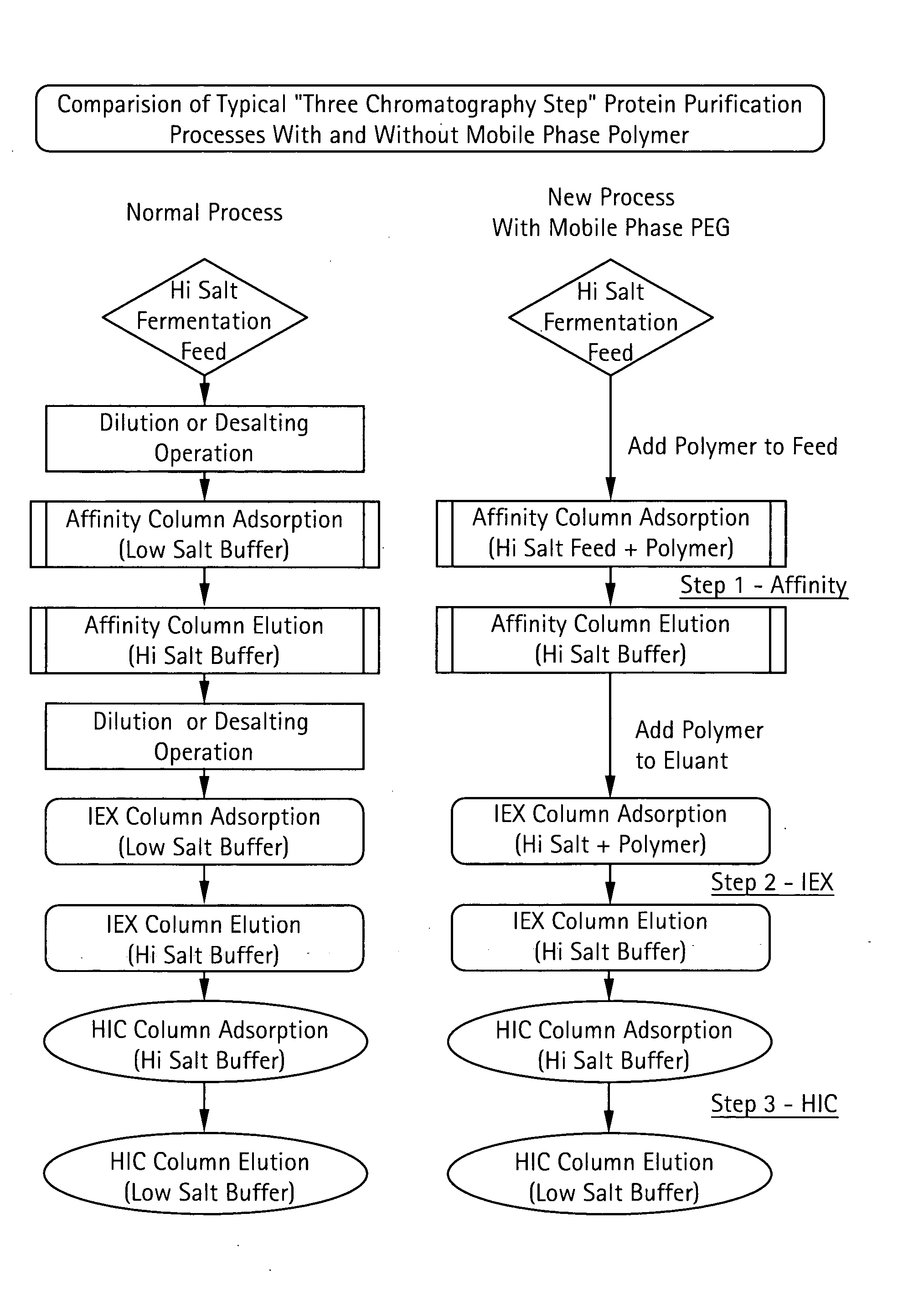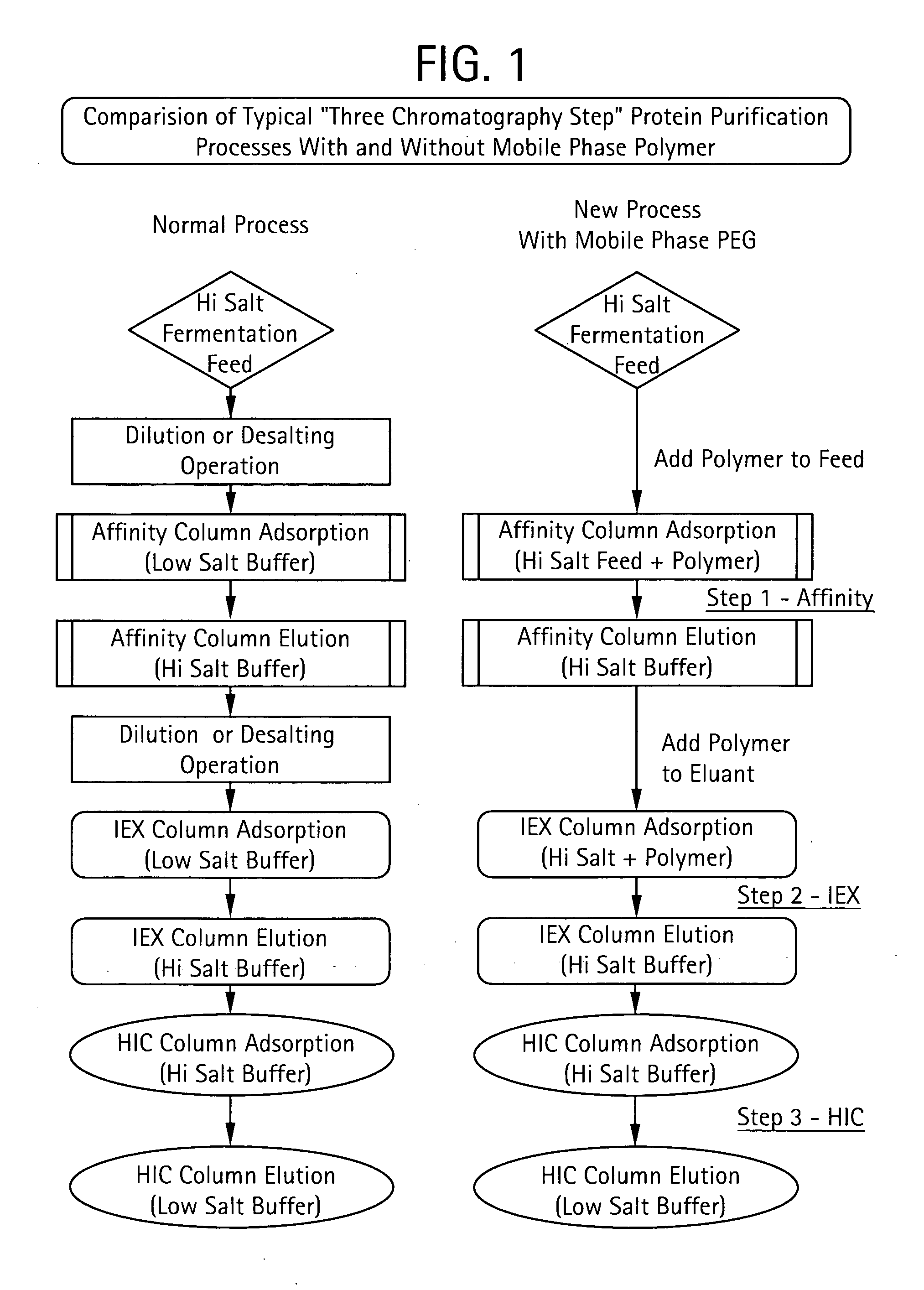Method for Chromatographic Purification
a chromatographic and purification technology, applied in the field of biotechnology, can solve the problems of increasing the volume and size of equipment required, increasing the cost of the process, and more cumbersome work
- Summary
- Abstract
- Description
- Claims
- Application Information
AI Technical Summary
Benefits of technology
Problems solved by technology
Method used
Image
Examples
example 1
[0075] In this example, a typical determination of dynamic capacity using frontal analysis was performed according to well known principles, as disclosed e.g. in Protein Purification-Principles, High Resolution Methods and Applications (J.-C. Janson and L. Rydén, 1989 VCH Publishers, Inc.). Studies were performed on ÄKTA™ chromatography work station (Amersham Biosciences, Uppsala, Sweden) using standard HR 5 / 10 or 5 / 5 columns (Amersham Biosciences, Uppsala, Sweden) packed with 1 ml or 2 ml, respectively, of the cation-exchange chromatography matrices SP Sepharose™ XL™ or SP Sepharose™ FF (Amersham Biosciences, Uppsala, Sweden), buffer salts and protein (bovine serum albumin, BSA) from Sigma-Aldrich. The buffer solutions were all at room temperature and 50 mM salt adjusted to pH 4.75. BSA in solution at 4 mg / ml was slowly (B10%. This value can also be checked against the amount of protein recovered from the column when it is washed with buffer at higher salt concentration (e. g. 0.5 ...
example 2
[0076] In this example, simple BSA frontal analysis data were obtained for SPXL matrix (as described above for FIG. 3) run in 5 / 10 column with protein being initially adsorbed from 0.22M NaAcetate buffer pH 4.75 containing 8% PEG 10000 (Fluka). This is 4×the normal IEX adsorption salt concentration, e. g. 0.05M, see example 1 above. The results are shown in FIG. 4. At 10% breakthrough, the column is washed with the same buffer containing PEG to demonstrate that protein does not wash off the column. The protein on the column is then eluted using similar 0.22M NaAcetate buffer at pH 5.25 (closer to the pI of BSA) without added PEG. The protein is seen to elute in a sharp peak with total of 180 mg protein or 90 mg / ml SPXL, to be compared with FIG. 3 and values of 20 and 60 mg / ml for BSA on SPXL at 0.05M NaAcetate. Following the same process but eluting with 1.1M buffer does not significantly enhance protein dynamic capacity.
example 3
[0077] In this example, the effect of increasing mobile phase added PEG 10000 (Fluka) on the dynamic capacity data of SPXL matrix for BSA obtained as described above was studies, but with adsorption using 110 mM NaAcetate buffer at pH 4.75. The results are shown in FIG. 5. As can be expected, at PEG concentrations approaching 10% the relatively high salt concentration caused solution clouding and protein precipitation.
PUM
| Property | Measurement | Unit |
|---|---|---|
| Molar density | aaaaa | aaaaa |
| Electrical conductivity | aaaaa | aaaaa |
| Affinity | aaaaa | aaaaa |
Abstract
Description
Claims
Application Information
 Login to View More
Login to View More - R&D
- Intellectual Property
- Life Sciences
- Materials
- Tech Scout
- Unparalleled Data Quality
- Higher Quality Content
- 60% Fewer Hallucinations
Browse by: Latest US Patents, China's latest patents, Technical Efficacy Thesaurus, Application Domain, Technology Topic, Popular Technical Reports.
© 2025 PatSnap. All rights reserved.Legal|Privacy policy|Modern Slavery Act Transparency Statement|Sitemap|About US| Contact US: help@patsnap.com



